
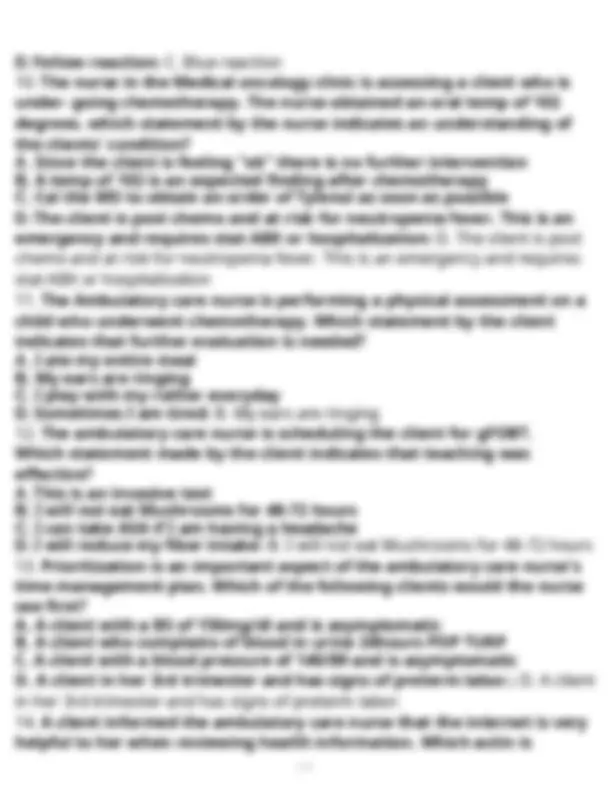
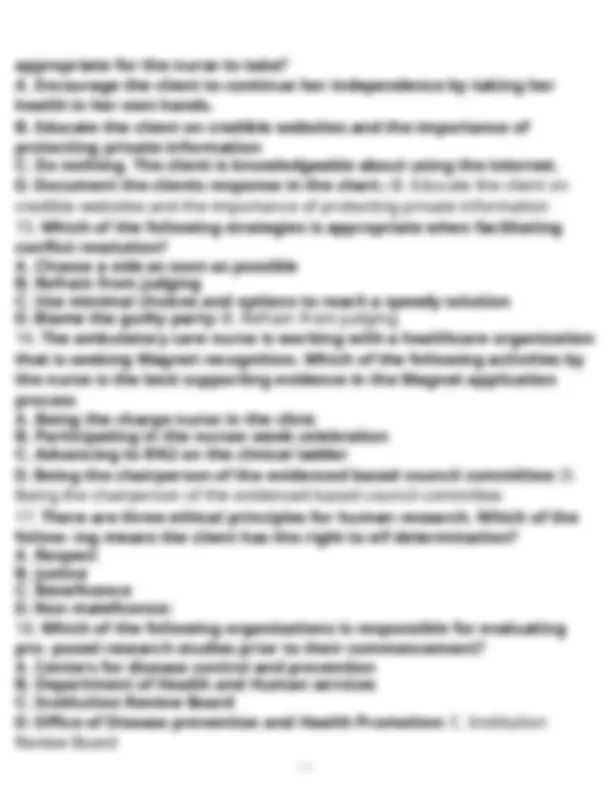
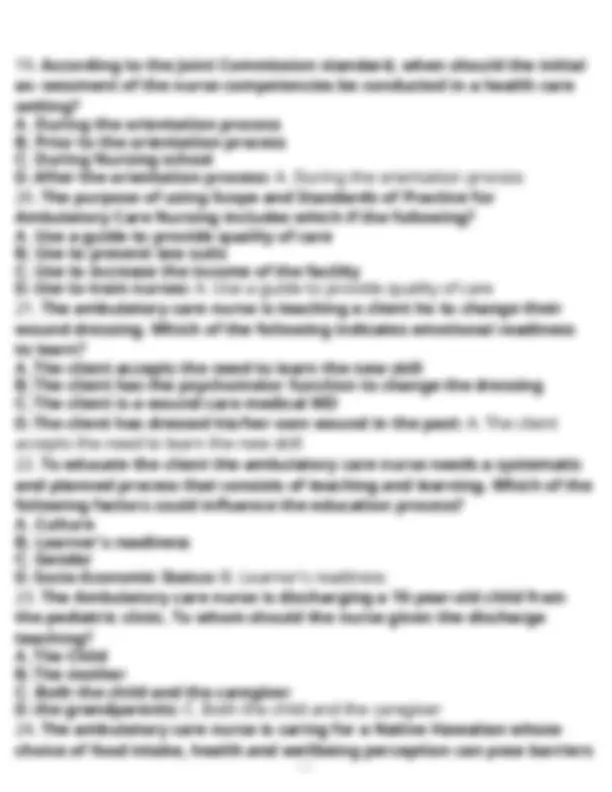
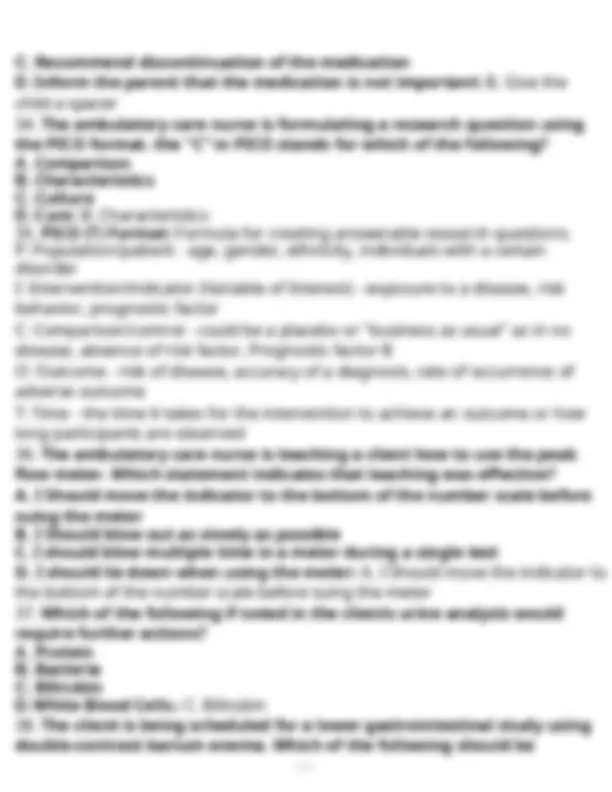
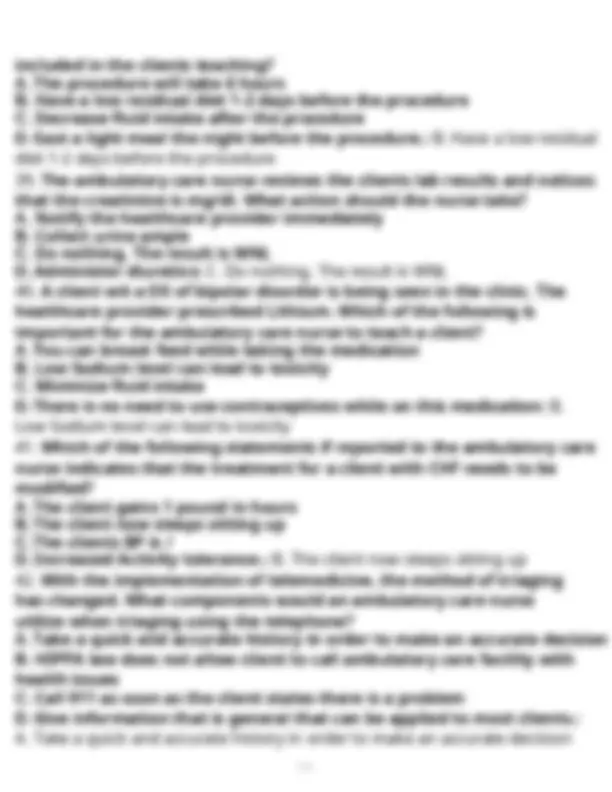
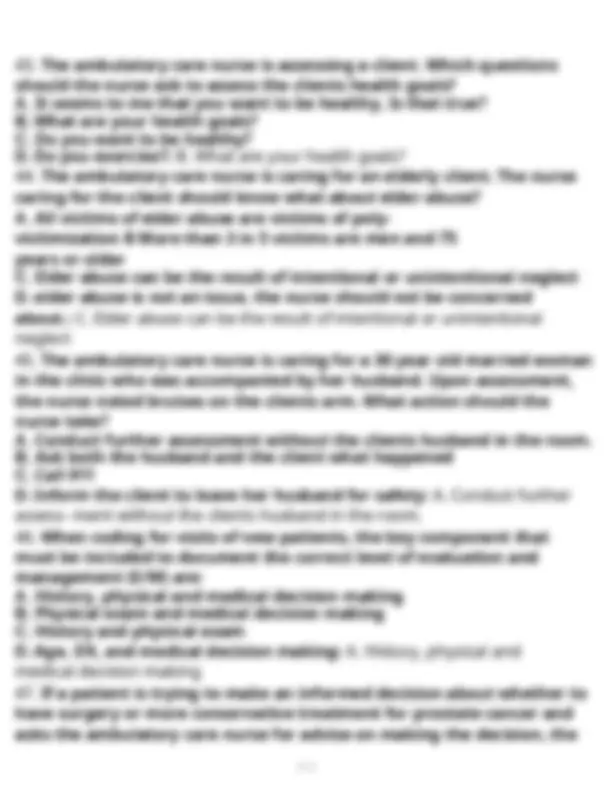
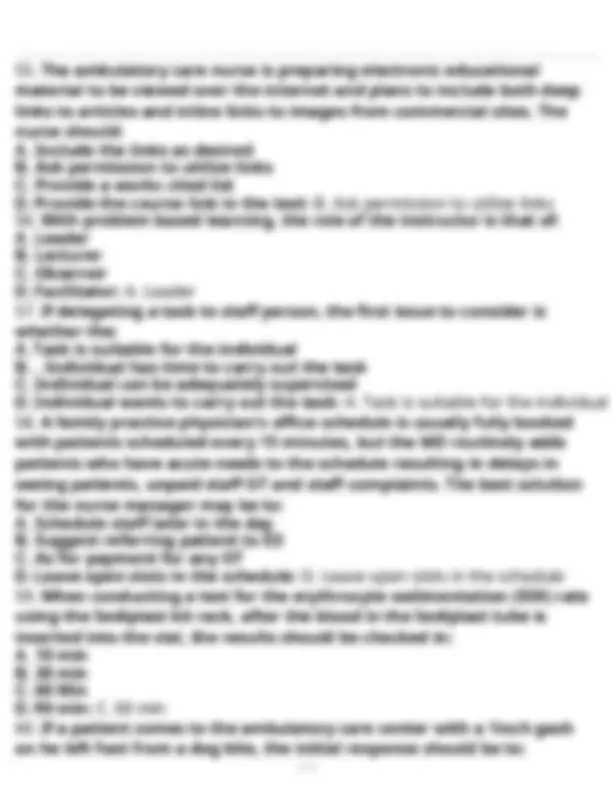

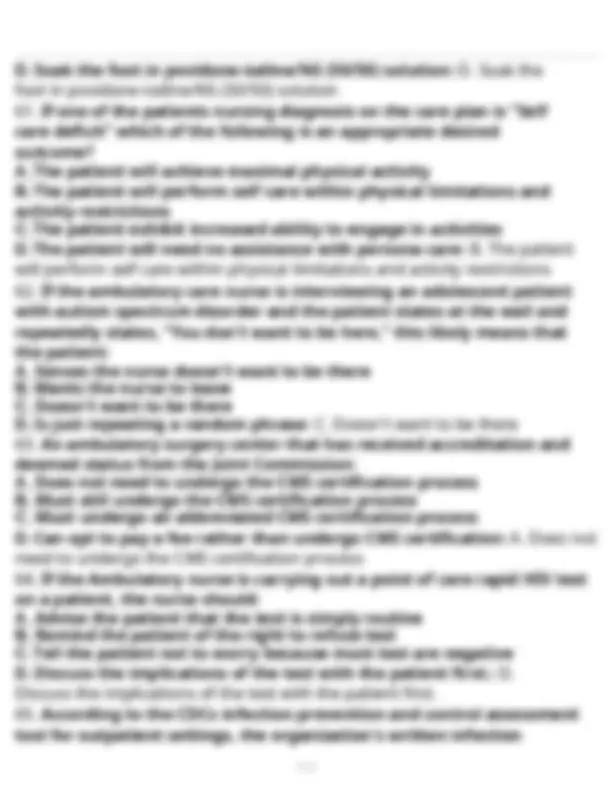
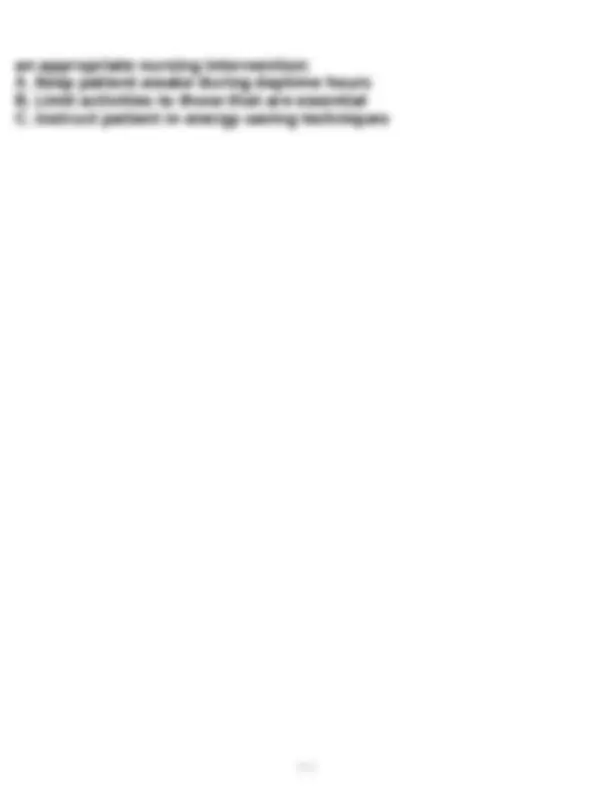
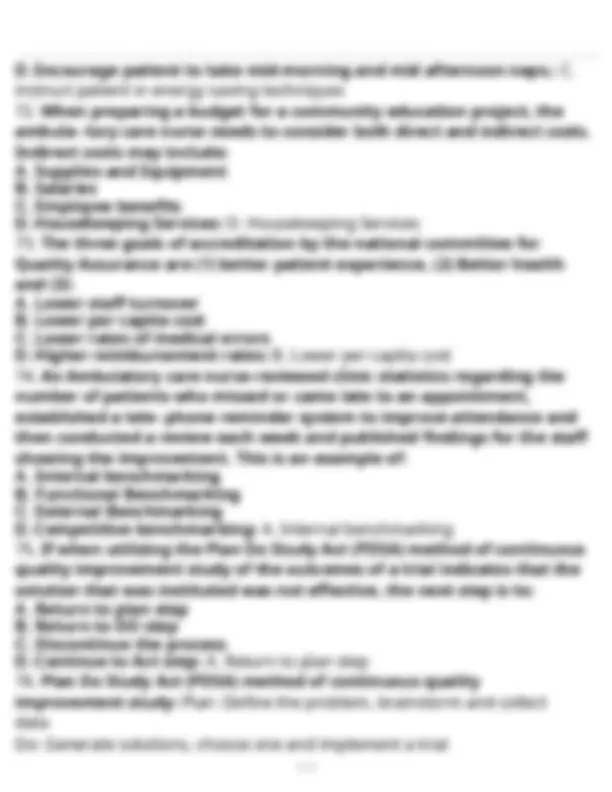
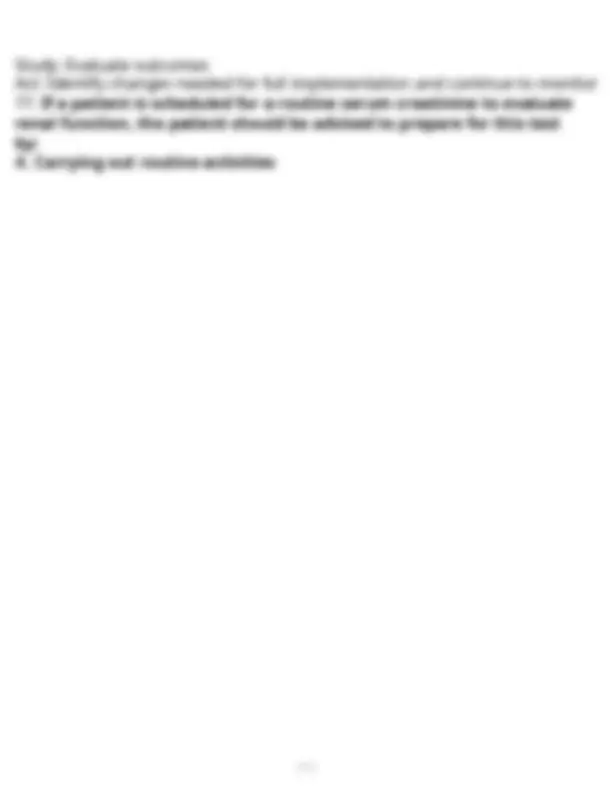
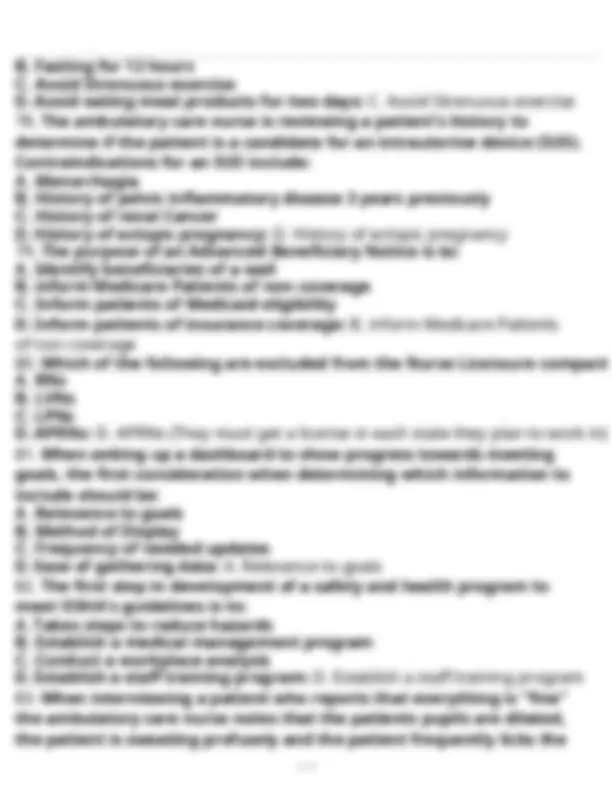
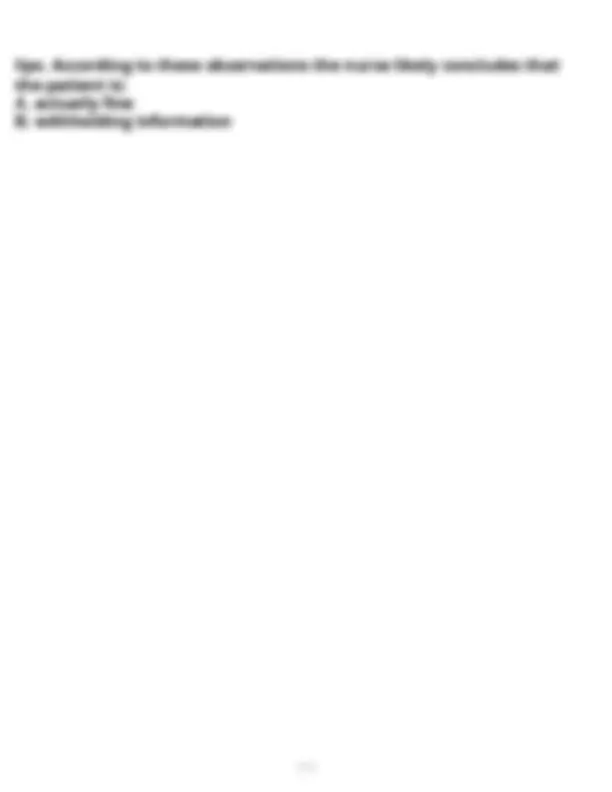
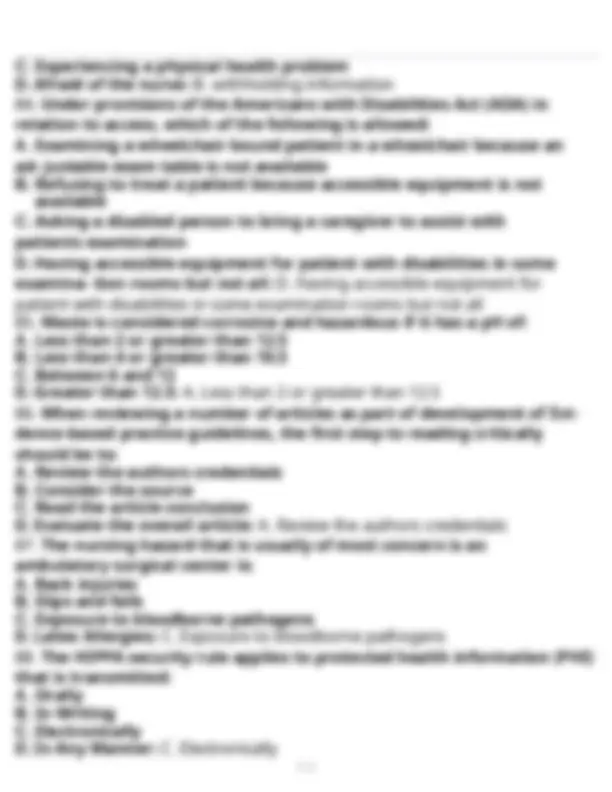
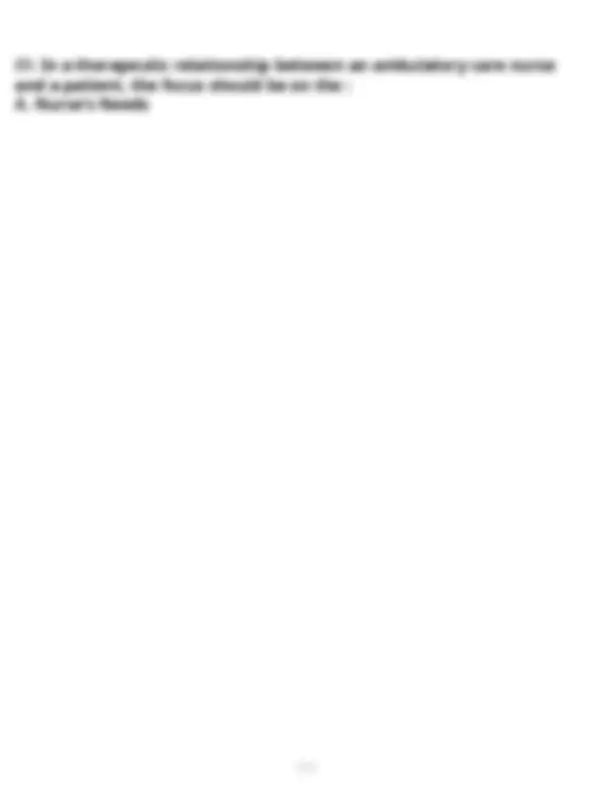
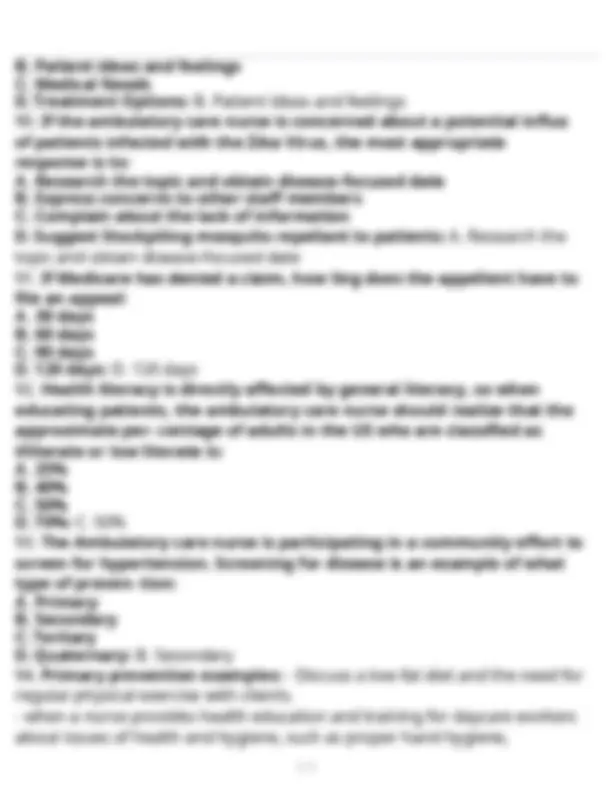
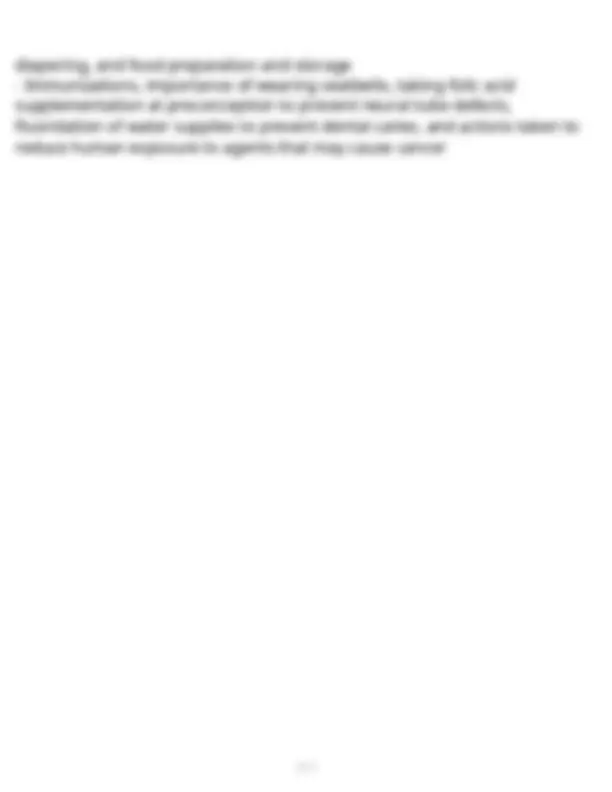
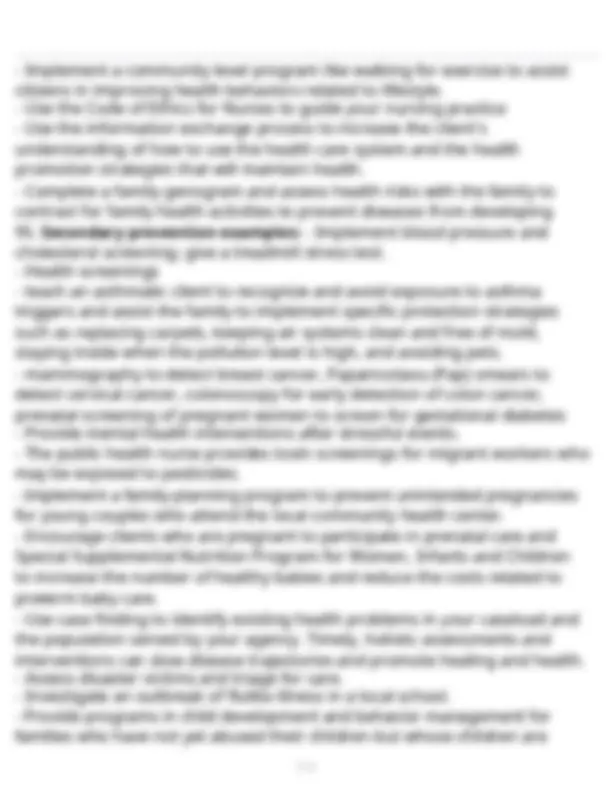
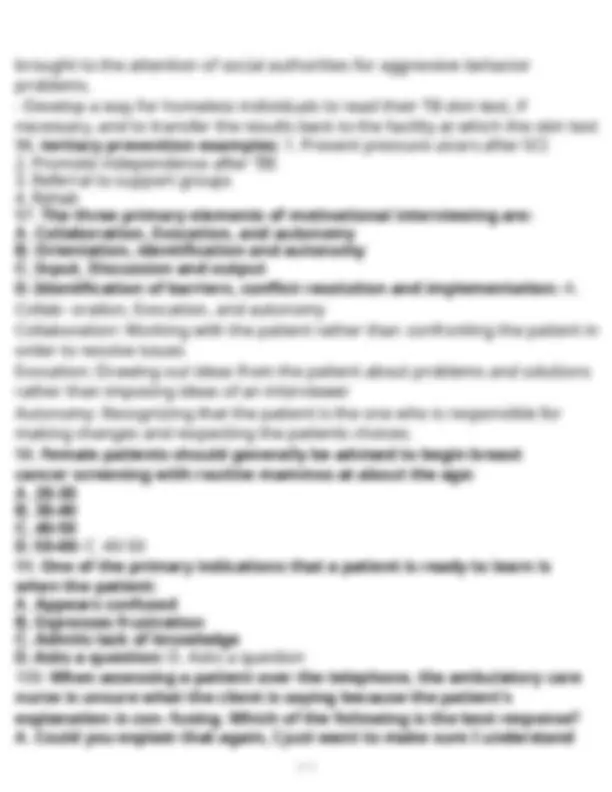
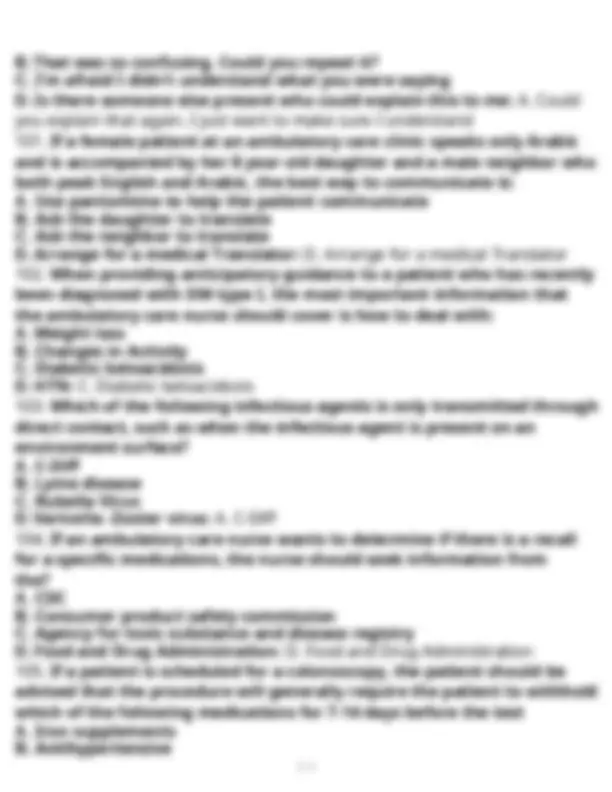
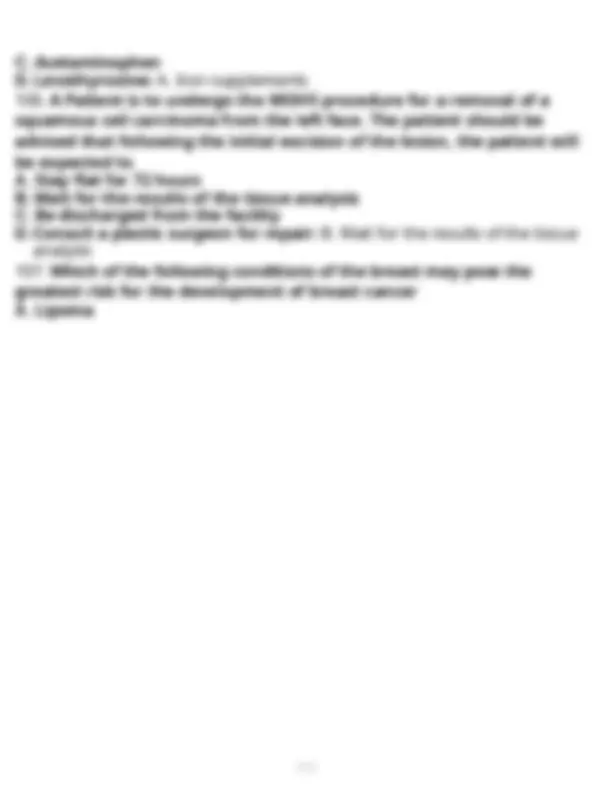
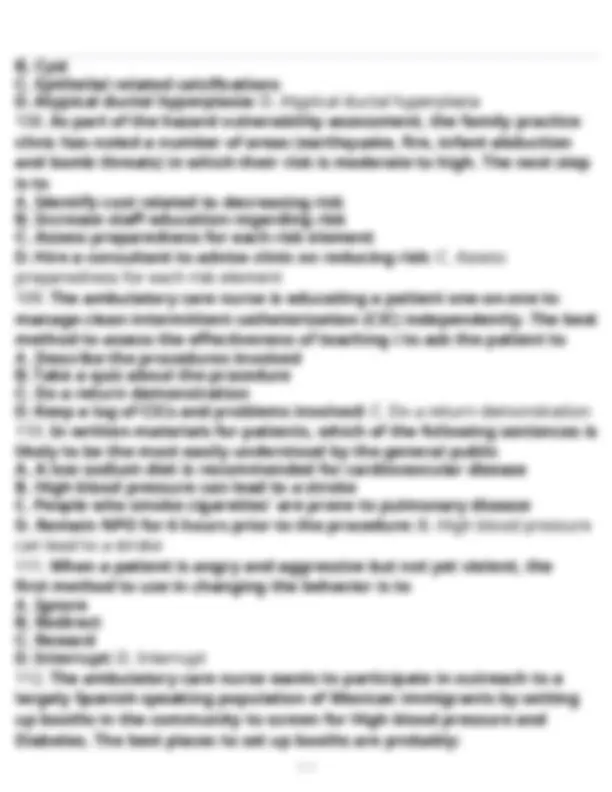
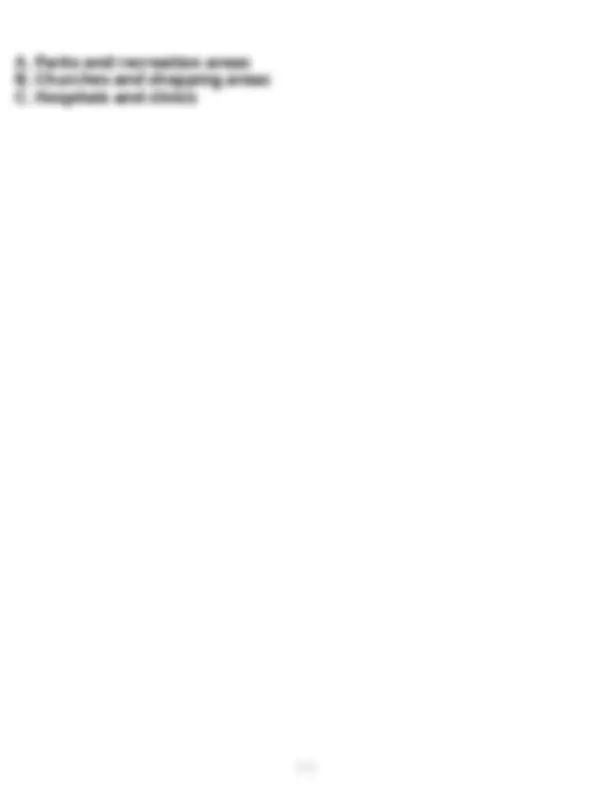
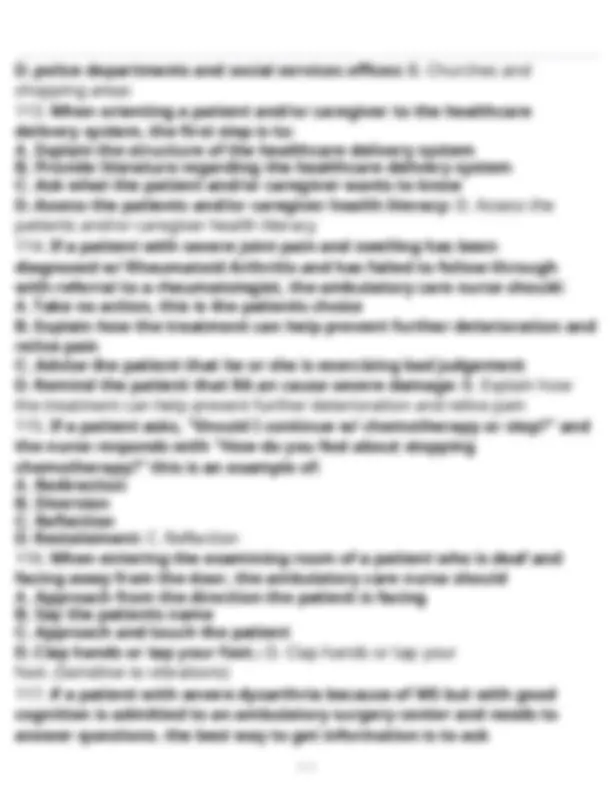
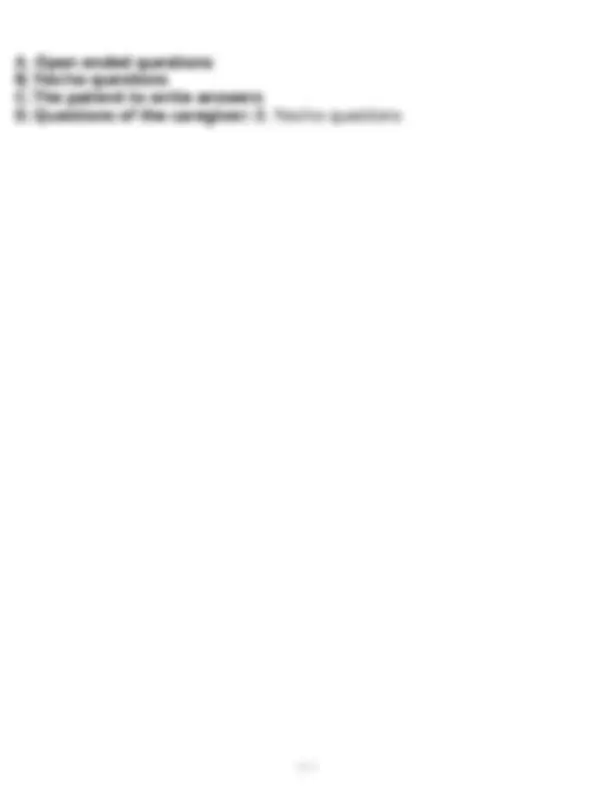
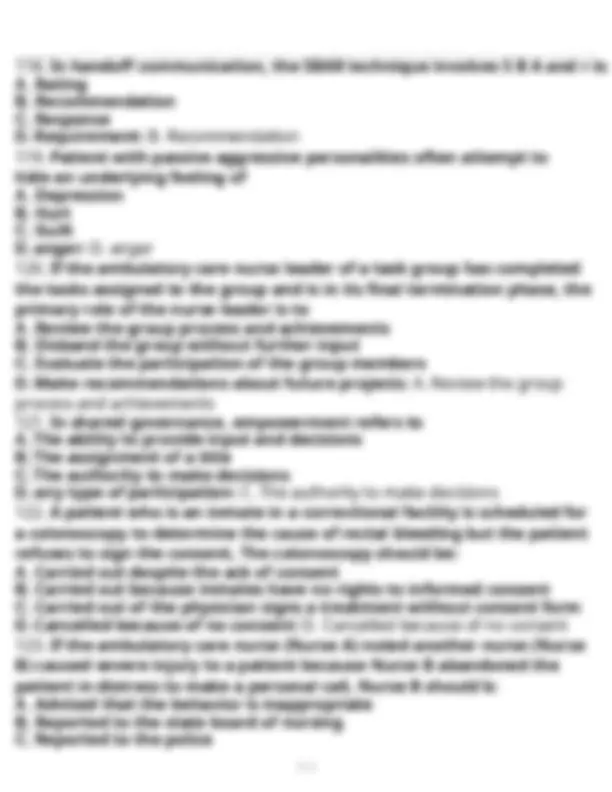
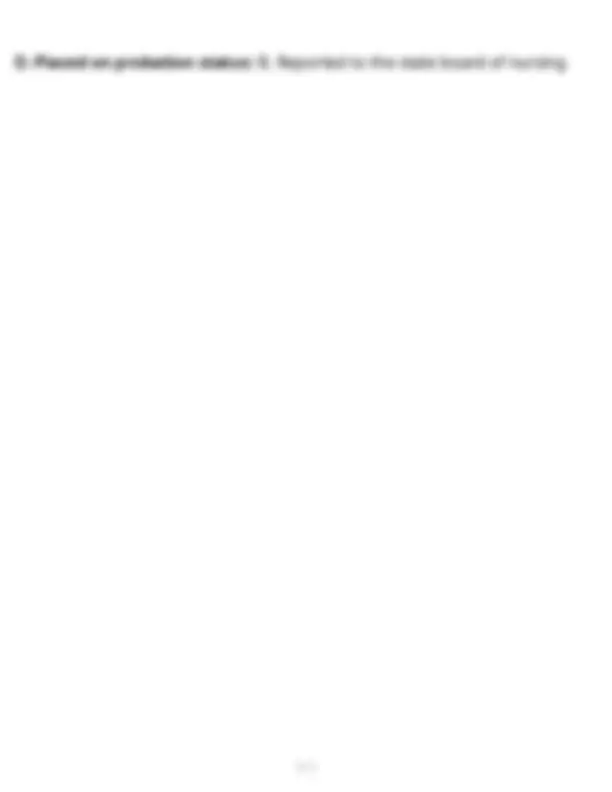
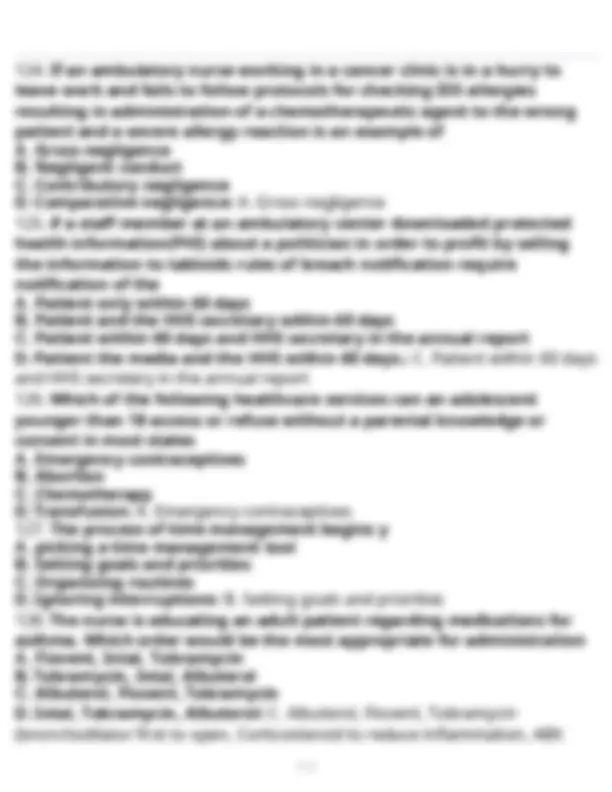
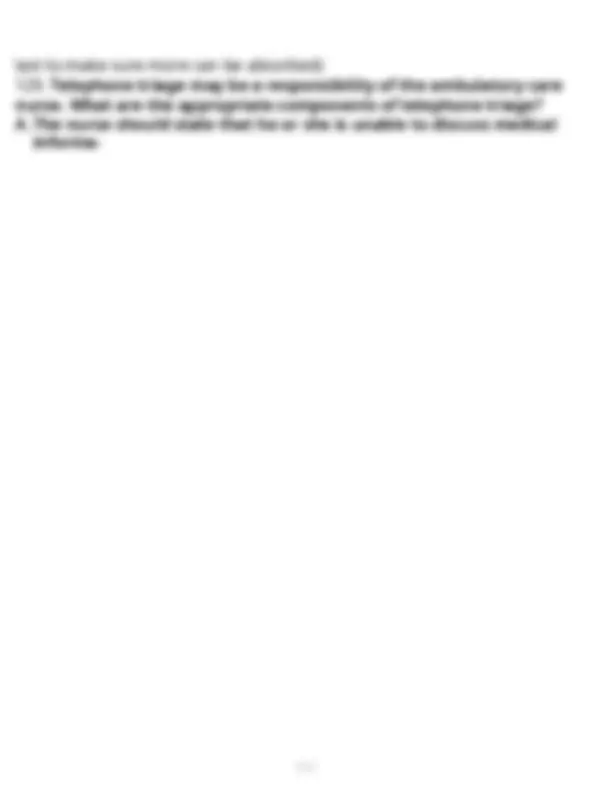
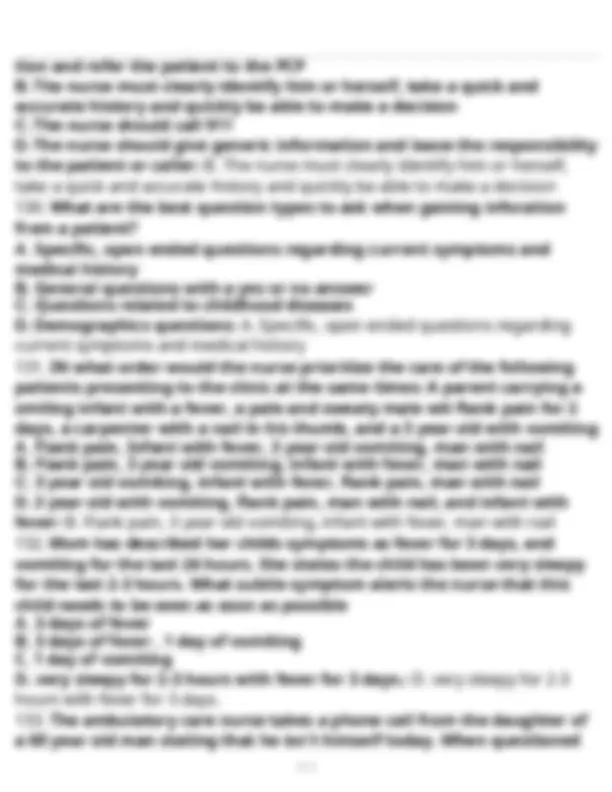
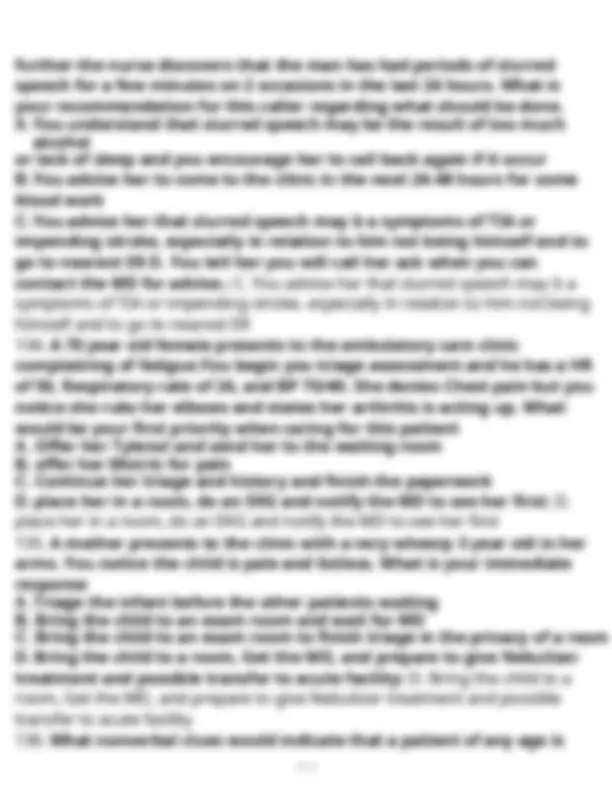
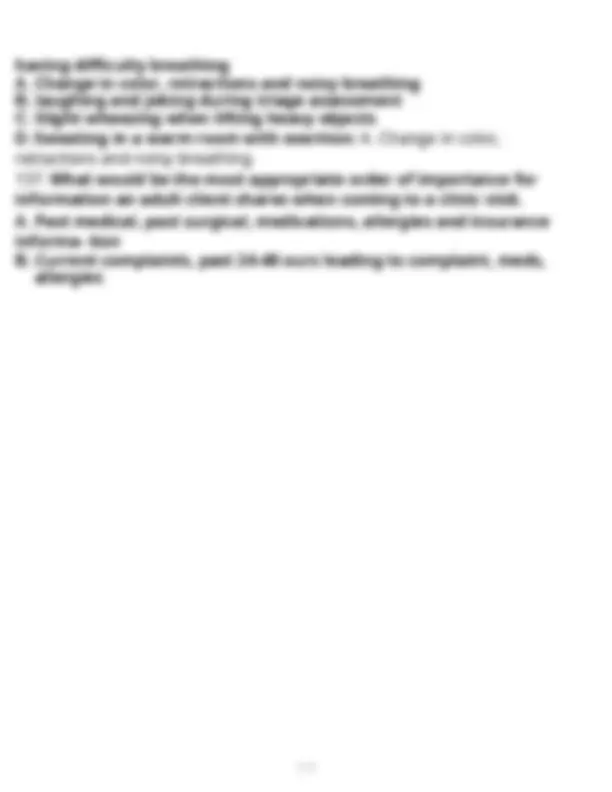
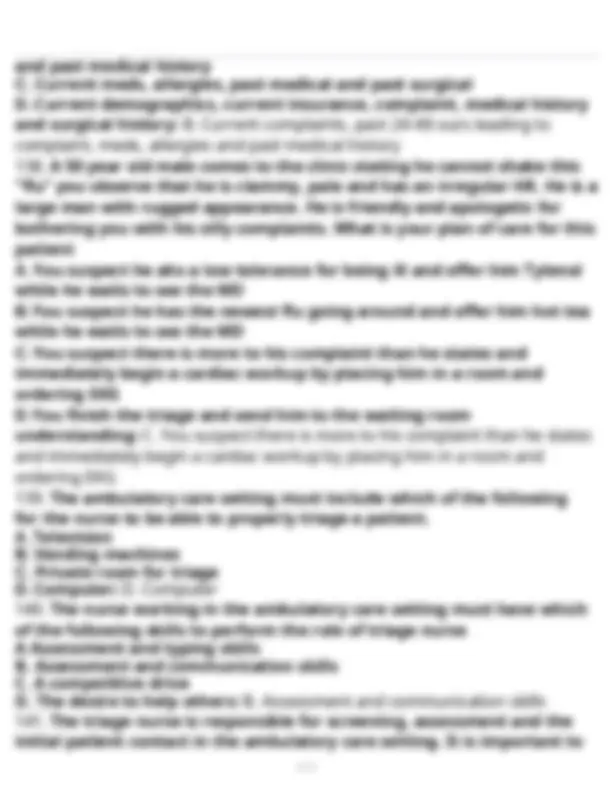
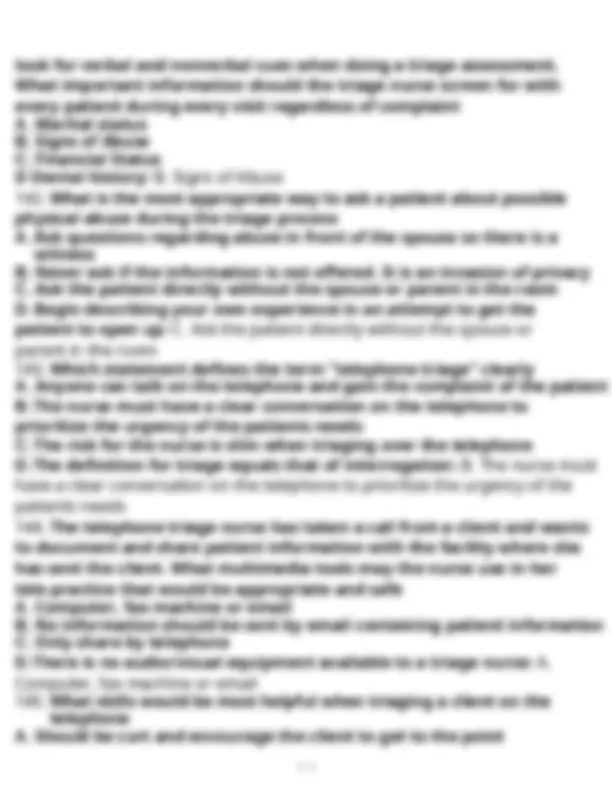
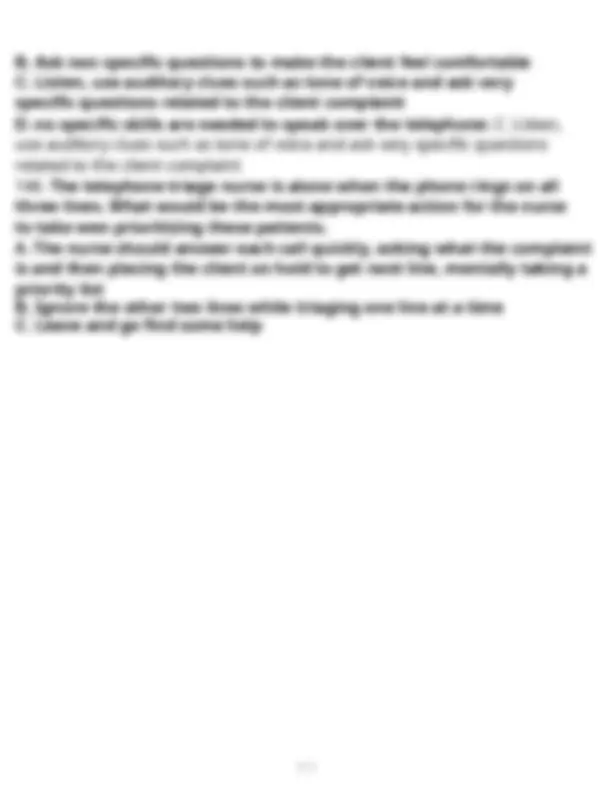
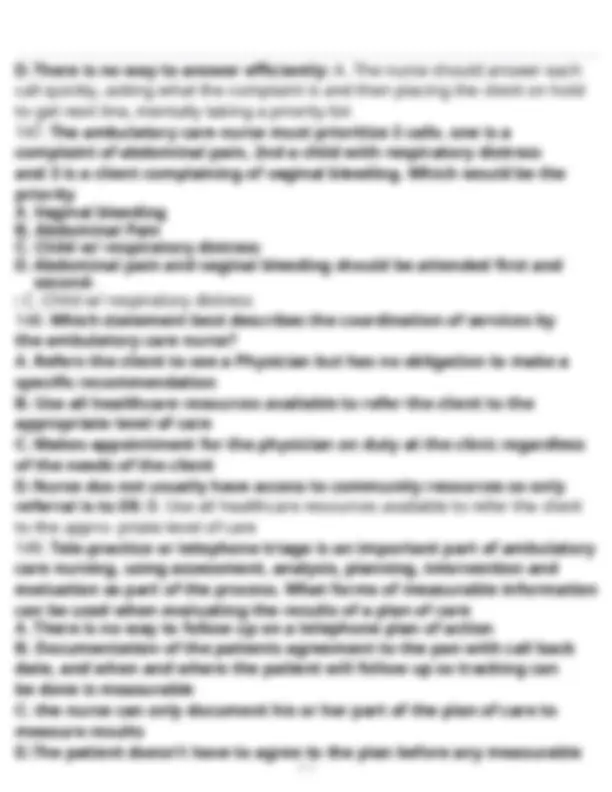
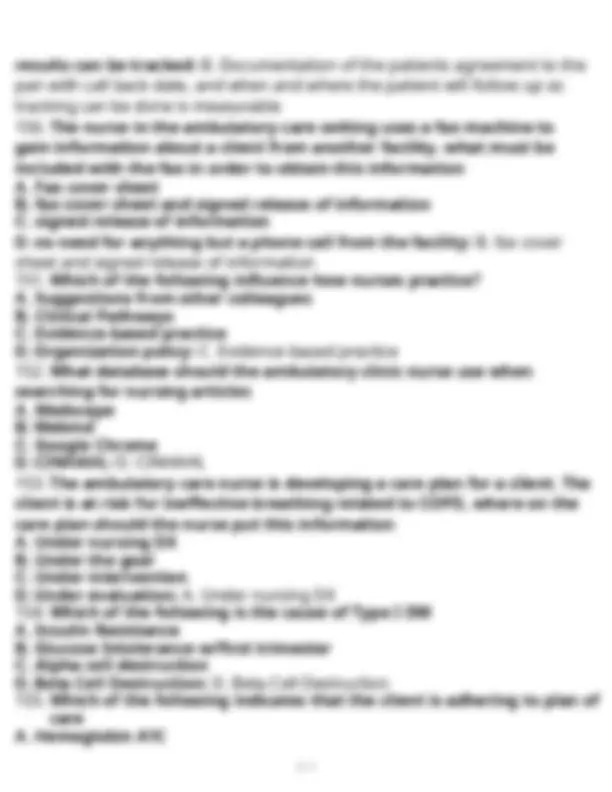
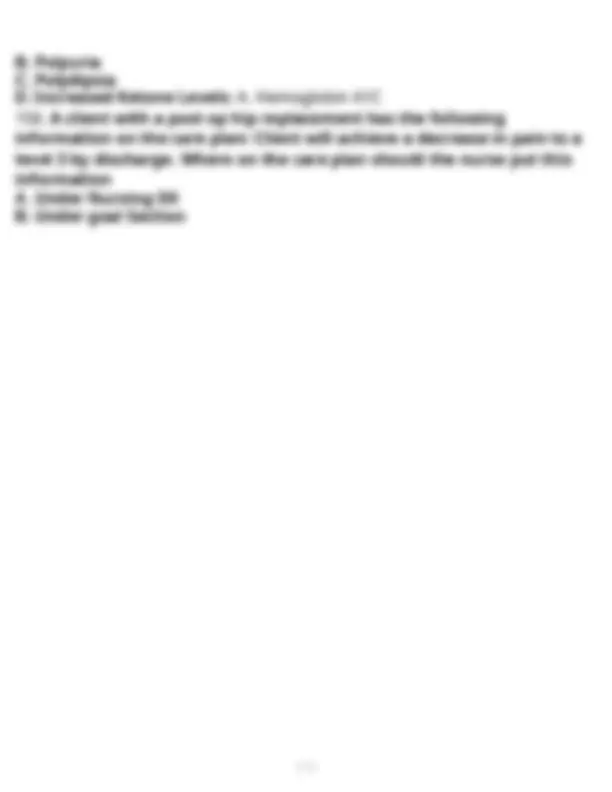
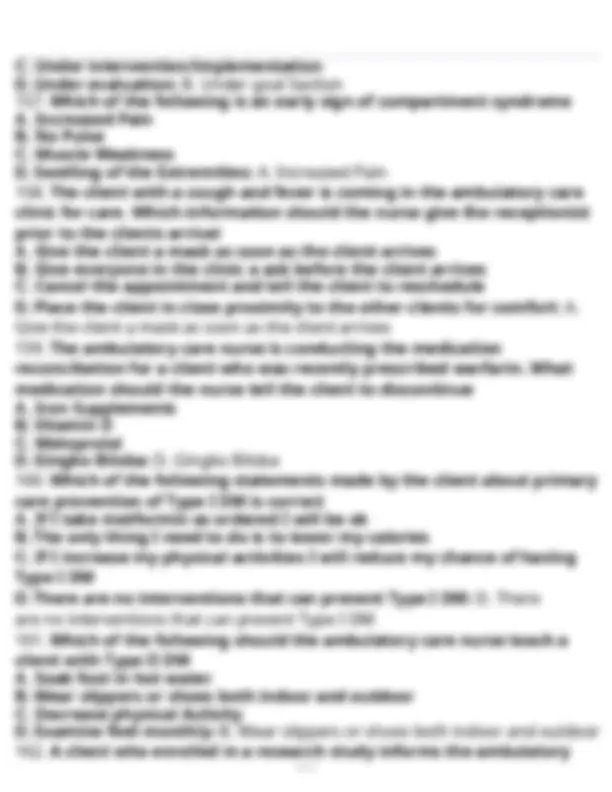
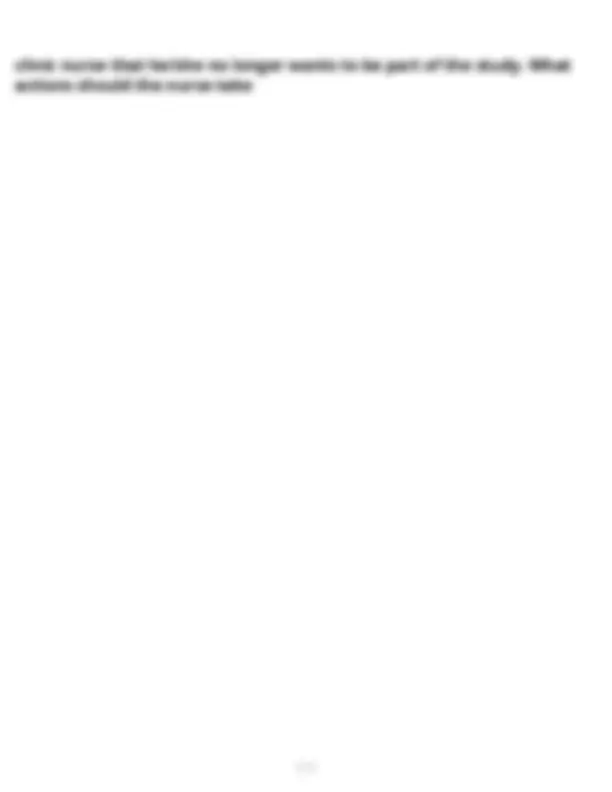
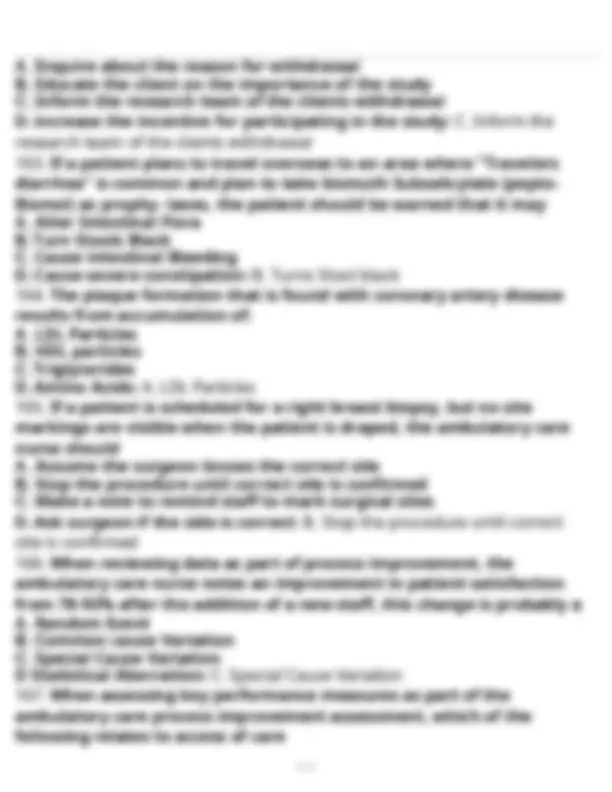
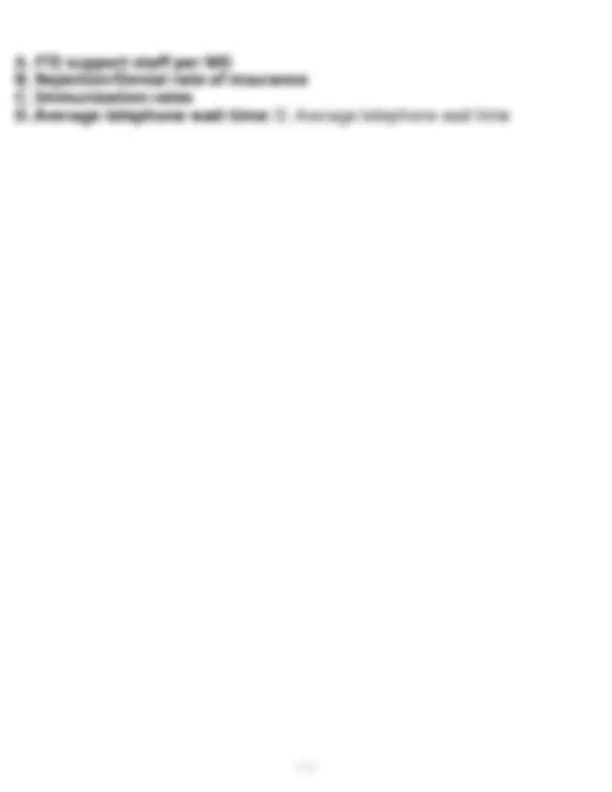
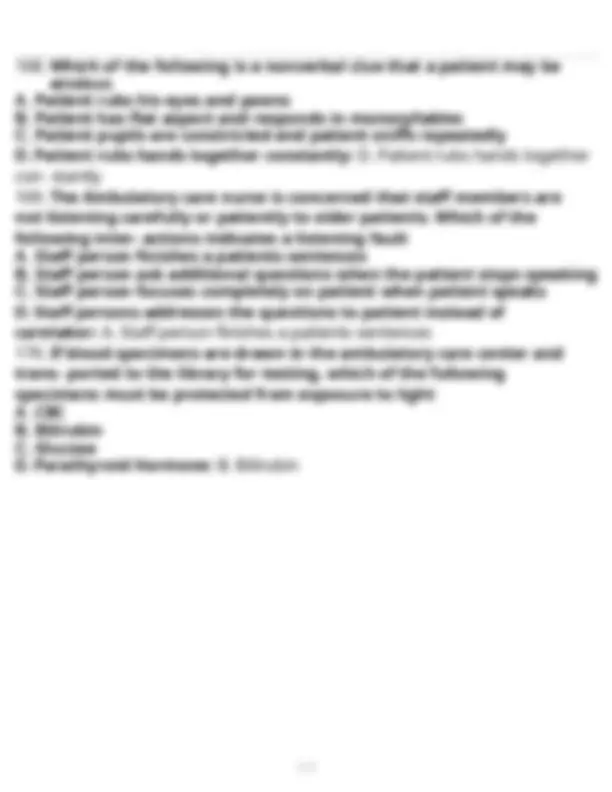


Study with the several resources on Docsity

Earn points by helping other students or get them with a premium plan


Prepare for your exams
Study with the several resources on Docsity

Earn points to download
Earn points by helping other students or get them with a premium plan
Community
Ask the community for help and clear up your study doubts
Discover the best universities in your country according to Docsity users
Free resources
Download our free guides on studying techniques, anxiety management strategies, and thesis advice from Docsity tutors
Ambulatory Care Nurse Certification Exam (ANCC) practice questions updated with answers
Typology: Exams
1 / 52

This page cannot be seen from the preview
Don't miss anything!













































A. Urine Glucose Level B. Glucometer blood glucose testing C. Hemoglobin A1C D. Creatinine Levels: C. Hemoglobin A1C
appropriate for the nurse to take? A. Encourage the client to continue her independence by taking her health in her own hands. B. Educate the client on credible websites and the importance of protecting private information C. Do nothing. The client is knowledgeable about using the internet. D. Document the clients response in the chart.: B. Educate the client on credible websites and the importance of protecting private information
B. Take vital signs and obtain ECG C. Take detailed history D. Call the EMS for transport: B. Take vital signs and obtain ECG
C. Recommend discontinuation of the medication D. Inform the parent that the medication is not important: B. Give the child a spacer
nurse should: A. Advise the patient on the best course of treatment B. Suggest the patient carry our research before deciding C. provide the patient with print and online resources D. Advise the patient to ask the physician for more information: C. provide the patient with print and online resources
A. Wash the wound area with soap and water B. Irrigate the wound with -ml of NS C. Irrigate the wound with - ml of hydrogen peroxide
prevention policies and procedures should be reassessed at least every: A. month B. 6 months C. 12 months D. 24 Months: C. 12 months
D. Encourage patient to take mid-morning and mid afternoon naps.: C. instruct patient in energy saving techniques
Study: Evaluate outcomes Act: Identify changes needed for full implementation and continue to monitor